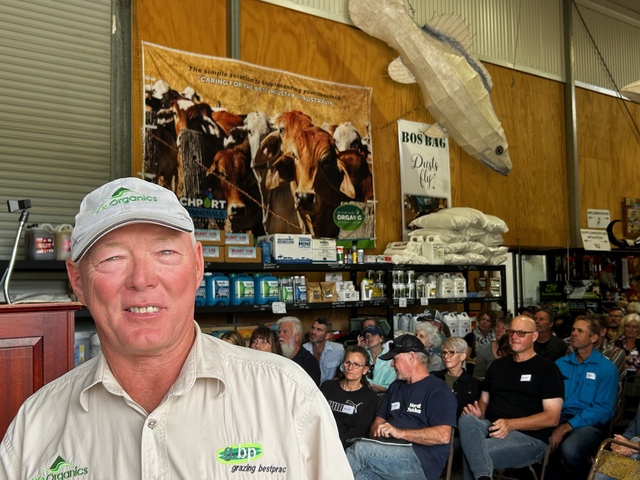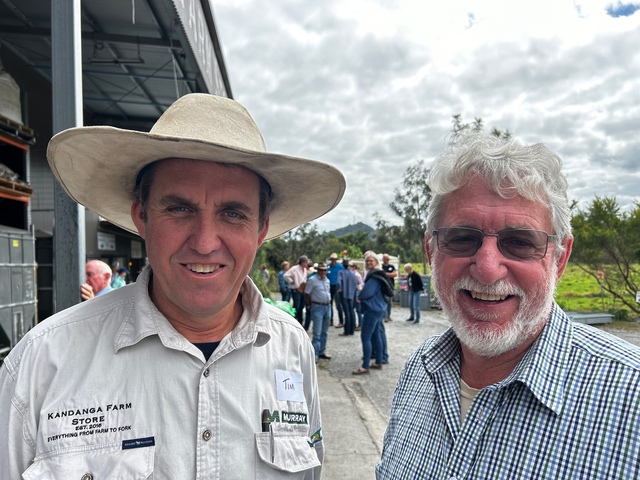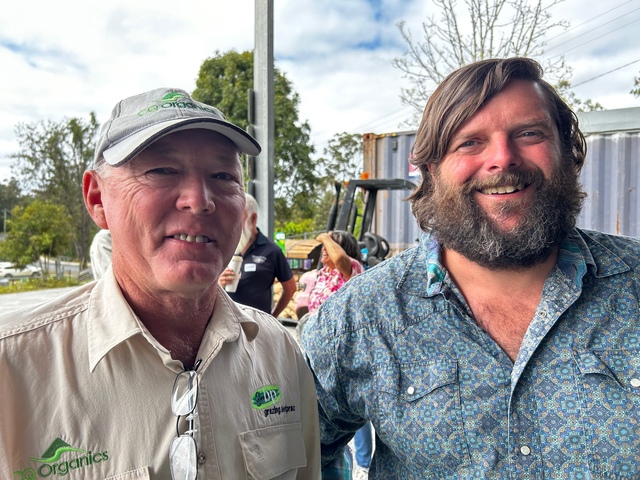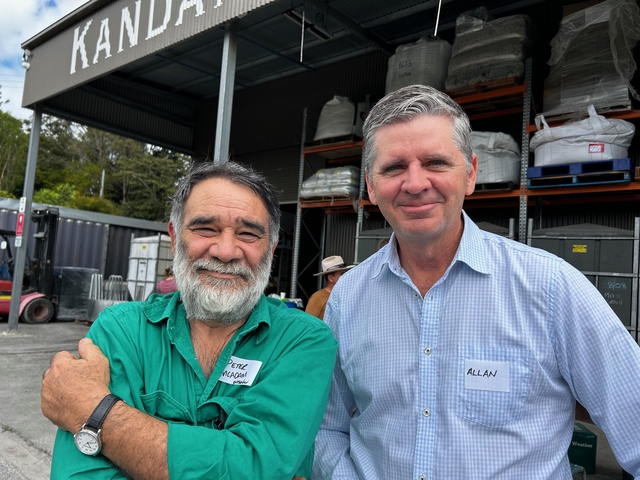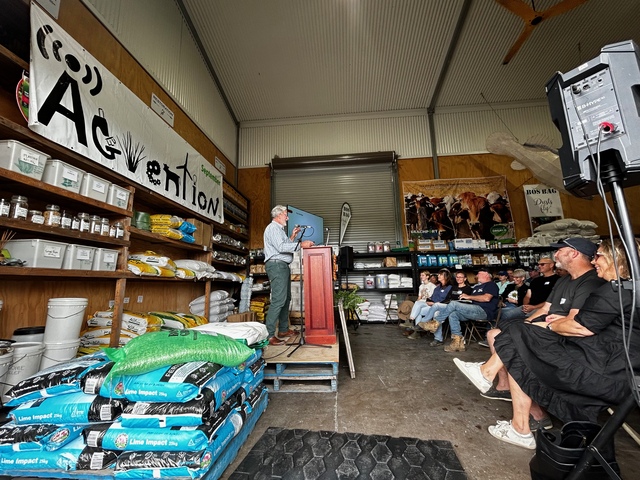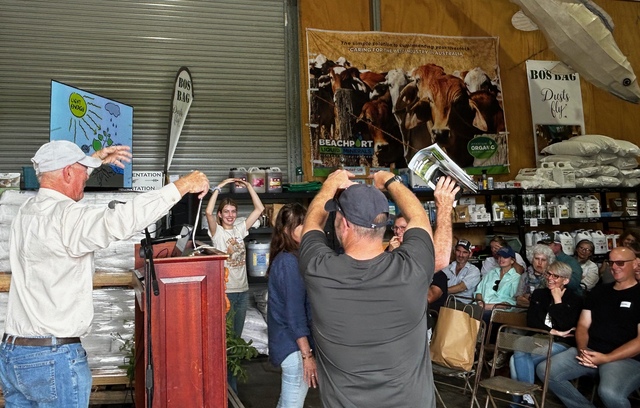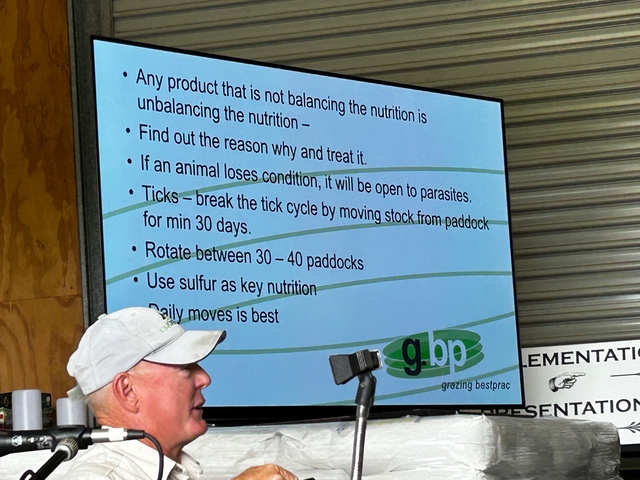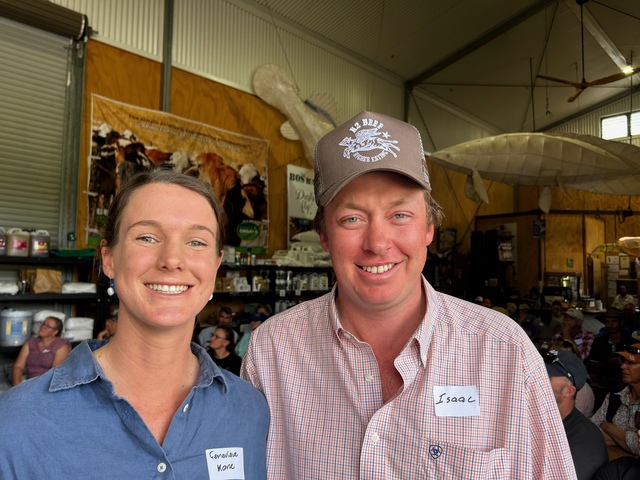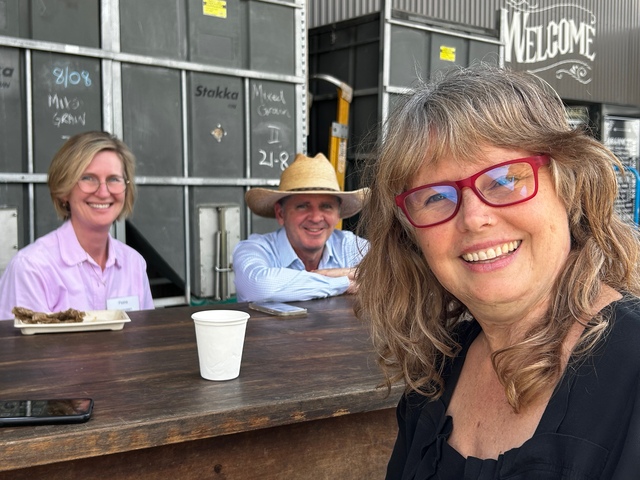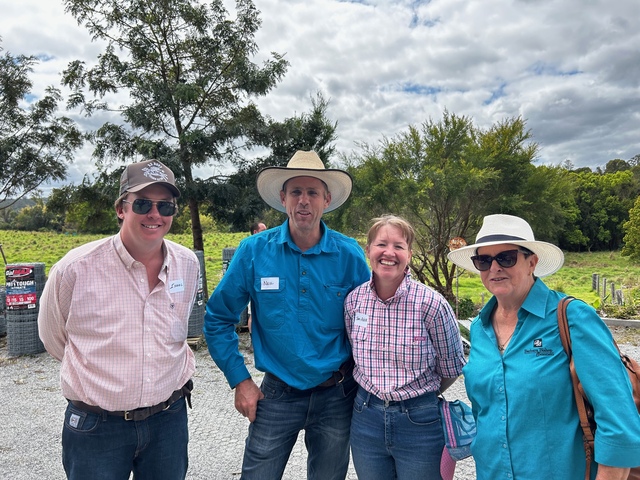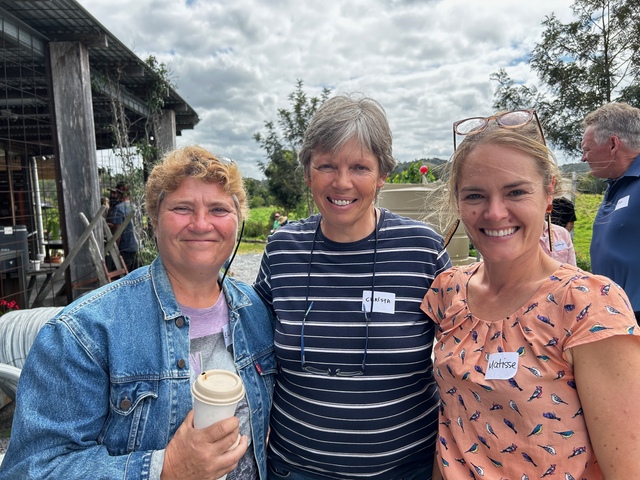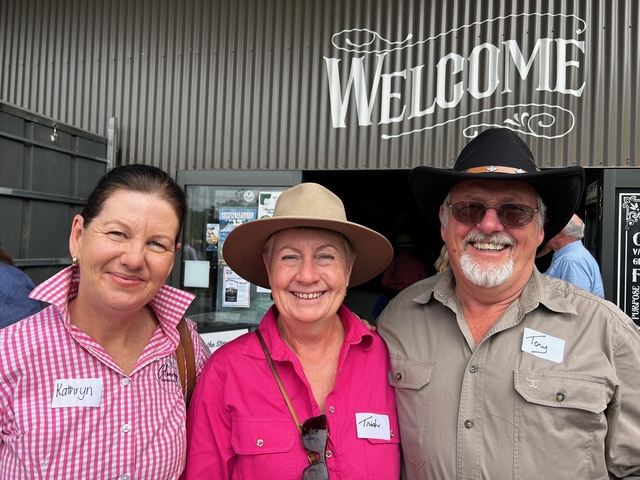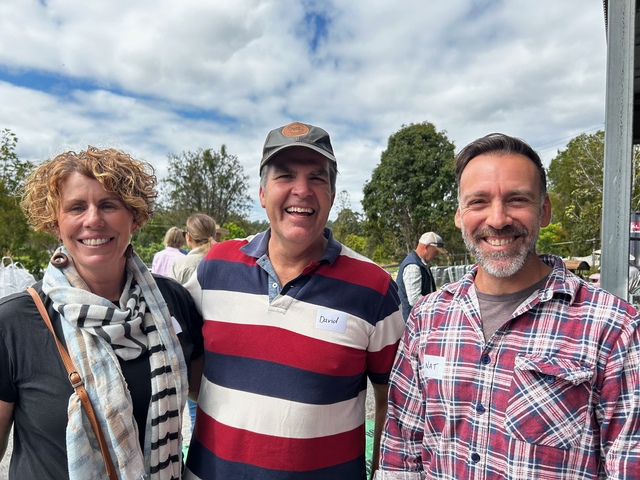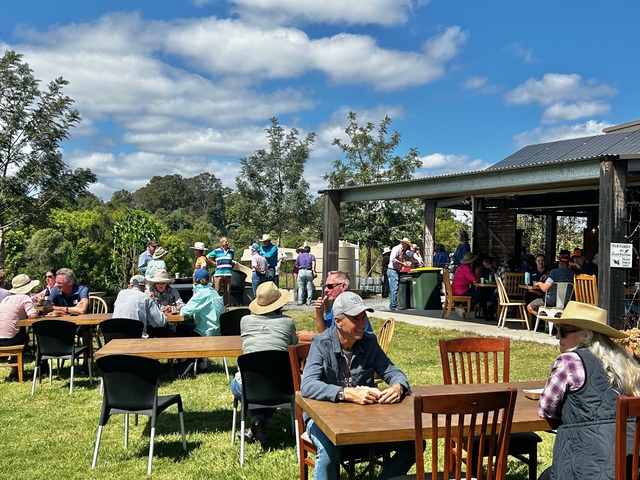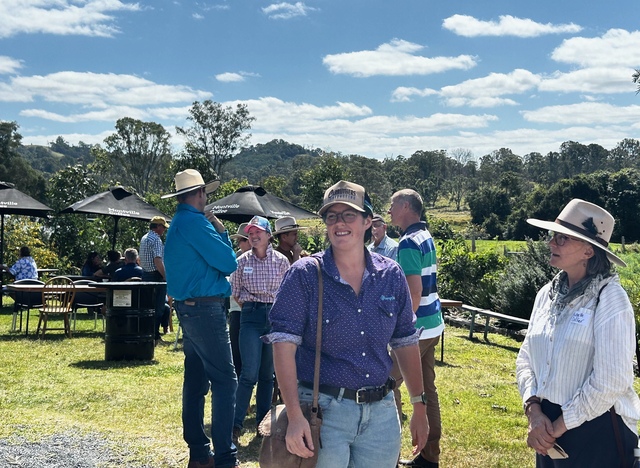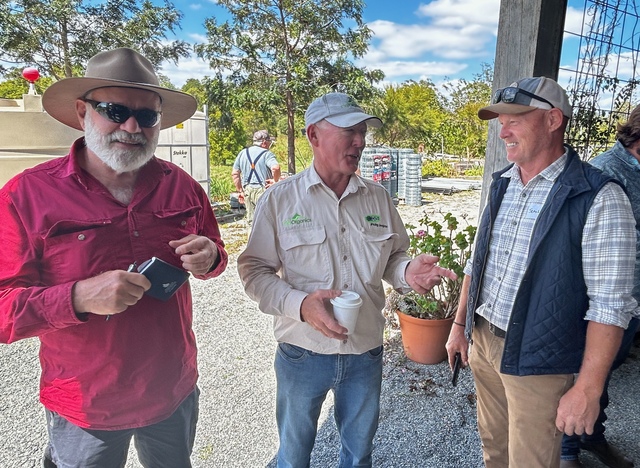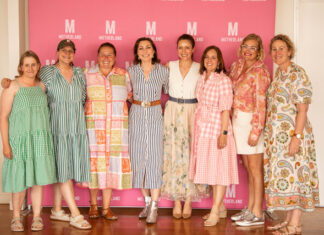The third Agvention regenerative farming field day proved to be a whole lot of fun as well as being informative and inspiring.
A variety of speakers attracted a full house at Kandanga Farm Store who were keen to look, listen and learn about new ideas in restoring soil health, biodiversity and sustainable farming methods.
Yet many of the ideas stem from older ways of caring for the land.
This included the reinforcement of the way the key to healthy crops, animals and consequently food, lies beneath our feet; the quality of the soil.
Tim Scott of Kandanga Farm Store said it was a good mix of speakers, who delivered so much new information.
That was part of the challenge for this year’s event – to remain fresh and relevant in order to build on past successes.
“What stood out was everyone who attended was into regen farming,’’ Tim said. “They were keen to look differently at the landscape, plants and animals.
“They were open to seeking different income streams, instead of spending money on things you can make money from.’’
What took many by surprise was the inspiring talk given by young farmers Genevieve Kane and Isaac Perina, who are among the 2024 scholarship recipients from the Lachlan Hughes Foundation (LHF).
Showing great maturity and knowledge, they detailed their journey as two of the 10 participants selected for the 2024 LHF Program.
Genevieve grew up at Carters Ridge, in the Mary Valley, and Isaac at Maryborough. Their talk showed there is plenty of optimism from the young generation for a future on the land.
At the ripe age of 19 and in her second year of a photographic degree at Griffith University, Genevieve was a city slicker and vegan who was sent to the bush to document country life.
Remarkably, this included a few days at the Hughes family property at Dulacca where she met Lachlan.
This was before Lachlan’s tragic death in a farm accident.
Yet it was at this time Genevieve was introduced to the ethical production of food, and that time really inspired her to get involved in farming.
Established in 2019 by Philip and Adele Hughes in honour of their son Lachlan, the Hughes Foundation looks to continue his vision and passion for the development of regenerative agricultural practices for grazing lands.
He believed that it was possible to rebuild soils and increase their sustainable productive capacity to withstand the variables of rainfall and that this in turn would revitalise rural communities and improve the economic sustainability of the industry.
Such was Genevieve’s belief in regen farming she decided to move to Emerald and undertake a Bachelor of Agriculture at Central Queensland University.
As a result she was catapulted into the channel country of Western Queensland, working at Cordillo Downs, between Innamincka and Birdsville.
Genevieve then moved to Durham Downs, a S. Kidman & Co property and one of the highest regarded grazing blocks in Australia.
That’s where she met Isaac, who had a similar story to her.
Growing up in Maryborough, he went from university in Brisbane then headed west to Naryilco, at Thargomindah, also owned by Kidman & Co.
He went on to be head stockman at Durham Downs, south of Windorah and along the Cooper Creek.
Genevieve went on to learn how to start horses under the guidance of Rusty Ferguson.
Together with Isaac, they were encouraged to apply for the Hughes Foundation scholarship, and at same time given a job at Dulacca Downs.
The scholarship entails mentoring with the group of other participants from throughout Australia. They come together every quarter for discussions and presentations from within the regen and agricultural sector.
It is about personal as well as practical development involving soil health, pasture management and the use of technology.
The amazing part of the Hughes Foundation is that such a tragedy can deliver a positive outcome … a living memorial that is growing year by year.
Both Genevieve and Isaac are incredibly grateful they have the chance to learn so much.
They can see their future and at the end of the scholarship will head out to implement things they have learned.
It is giving them opportunities for extra courses, given them contacts, and put them in touch with a group of inspiring people.
So far this year they have been given an understanding of the basis of sustainable soils, Isaac said.
They have also been shown a satellite imaging program telling how much feed is in a paddock.
“Based on satellite images, it is a really good tool to take guesswork out of pasture management,’’ Isaac said.
“Story telling and public speaking is another aspect the Lachlan Hughes Foundation focusses on.
“We are learning far more than expected.’’
As part of their year with the scholarship, participants are given a simple but effective project to undertake.
In this case, Genevieve and Isaac were given the task of rehabilitating an eroded gully on the Dulacca property.
They were to do it in such a way that the work could be maintained and upgraded over time.
The erosion gully was among trees and cattle grazed there intermittently in high density, Genevieve said, but due to the state of the soil whenever it rained the nutrition was lost.
“The paddock above it was farmed with monoculture crops so the hydrology had changed. This means the soil is dispersive and would crumble when water hit it.
“It’s dirt, not soil.
“The gully has been caused by uneven contour banks that have broken out at the lowest point and most degraded sections of the paddock.’’
At the start of year Genevieve and Isaac ran tests and found a maximum of five plant species found in all of their test quadrants.
The soil was seriously lacking in organic matter, fungal activity or any sort of root activity.
“We did infiltration tests and it took more than 20 minutes for an inch of water to seep into the soil.
“When we used a penetrometer we could only get it 1.5cm into the ground.
“That makes it hard for any plant roots to get down into the soil.’’
Isaac said they decided to graze cattle to impact the area – 60 head with high intensity graze through this and surrounding areas.
“We decided to include charcoal in our project, first by mixing it with canola to make it palatable and get the cows to eat it.
“They inoculate the charcoal with their gut biology and then it spreads into the soil.
“You effectively have microbiology and fungal activity in tiny homes in the soil, and that holds a lot of moisture.
“This was 30gm of biochar per head per day.
“We tried to get the lick mixture to last two days but it lasted two hours.’’
Another part of the project was bale grazing, Genevieve said, in which they used the technique to get the cattle into the erosion hole itself. In doing so they would break down the edges and the headwall cuts.
“We put the bales into chokepoints so, when the cows were not in there, it would act as a bit of a barrier and store water.
“With 40mm of winter rain, we saw the banks breaking down, a barrier in the gully forming and storing some water. This resulted in the bales releasing nutrients, and there was some green growth as a result of mulch and some slow water.
“Under all the mulch you could see the fungal activity.
“We’ve come to realise that uneven contour banks take the soil away. They need to be level and slow.
“We intend to lay a bit more mulch and get carbon into the soil, then plant grass seed and get some roots into the soil.’’
The year has not just been about the project, Isaac said.
“It’s a vehicle for all of the things we are going to learn.
“We are part of an inspiring group of people and making great friendships – they are from different parts of Australia and with different skill sets.
“It has inspired us to attend more courses and work on our own knowledge: Planning, data collection and time management.
“Mostly its about being able to share our story and the changes taking place.’’
For Genevieve, it’s also about working on their own health, nutrition and mindset.
“That’s so important. We need to work on ourselves first and foremost before we can work on external things.
“It’s been life-changing for us.’’
LESSONS LEARNED
Agvention 2024 covered a lot, Kandanga Farm Store’s Amber Scott said.
This included gaining a new appreciation for weeds, trying to count dots and stars, pretending to be grass, and realising that sensitive design can restore landscape hydrology pretty quickly and economically.
Participants also learned how powerful livestock can be in contributing to ecosystem restoration, and learned that while there are no silver bullets with regenerative farming, there are plenty of tools to help.
Guest speakers included Brian Wehlburg of Inside Out Management, Mick Alexander of CQ Organics and naturopath Heidi Merika from Eumundi.
Then there was Ruby Earsman of Terra Firma Fertilisers, Hamish Andrews of Tarwyn Park Training at Kybong, the Creek Doctor Peter McAdam, Gerald Wyatt of Livestock Evaluation Services and Victoria Kane, who peer-reviewed scientific research into Rats Tail Grass as a potential human super food.
It was incredibly rewarding to see everyone gathered together, making connections, challenging paradigms and pushing boundaries, Amber said.
The fact remains: Healthy soil means healthy food, and that helps bring out the best in everyone.

